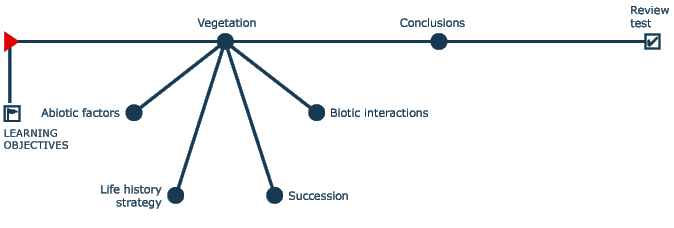|
In alpine environments vegetation patterns (species composition, relative
dominance of the species and vegetation structure) often change dramatically,
even over short distances. This pronounced heterogeneity results from
steep gradients in environmental conditions, e.g. small-scale variability
in the topography. In addition, environmental conditions may vary widely
over time due to frequent disturbance events. In some areas, particularly
where highly variable abiotic conditions interact with frequent
disturbance events on a small scale, there are pronounced spatio-temporal
dynamics in the alpine vegetation. Other areas show remarkably stable
communities with very long-lived dominants.
The aim of this section is to demonstrate how vegetation develops in
primary and secondary succession in the alpine environment and, particularly,
under what circumstances small-scale or temporary mosaics in vegetation
pattern develop as opposed to more homogeneous or long-lived communities.
For an understanding of the mechanisms underlying these patterns we will
consider biotic factors such as turnover, competition, facilitation,
regeneration and dispersal as well as refer to and synthesize the effects of
abiotic factors presented in other modules.
|

